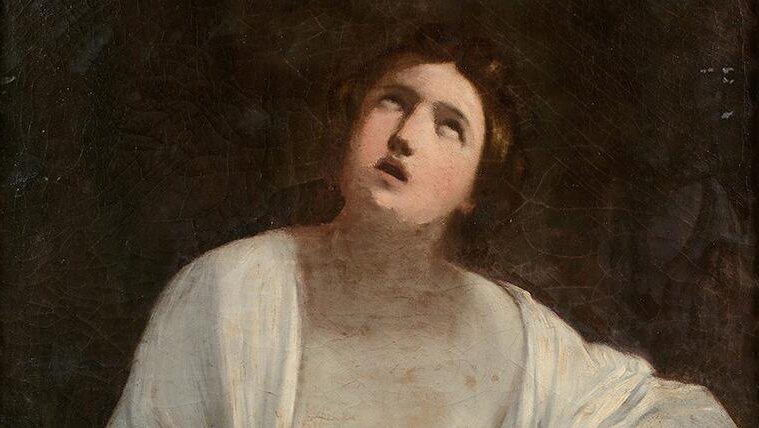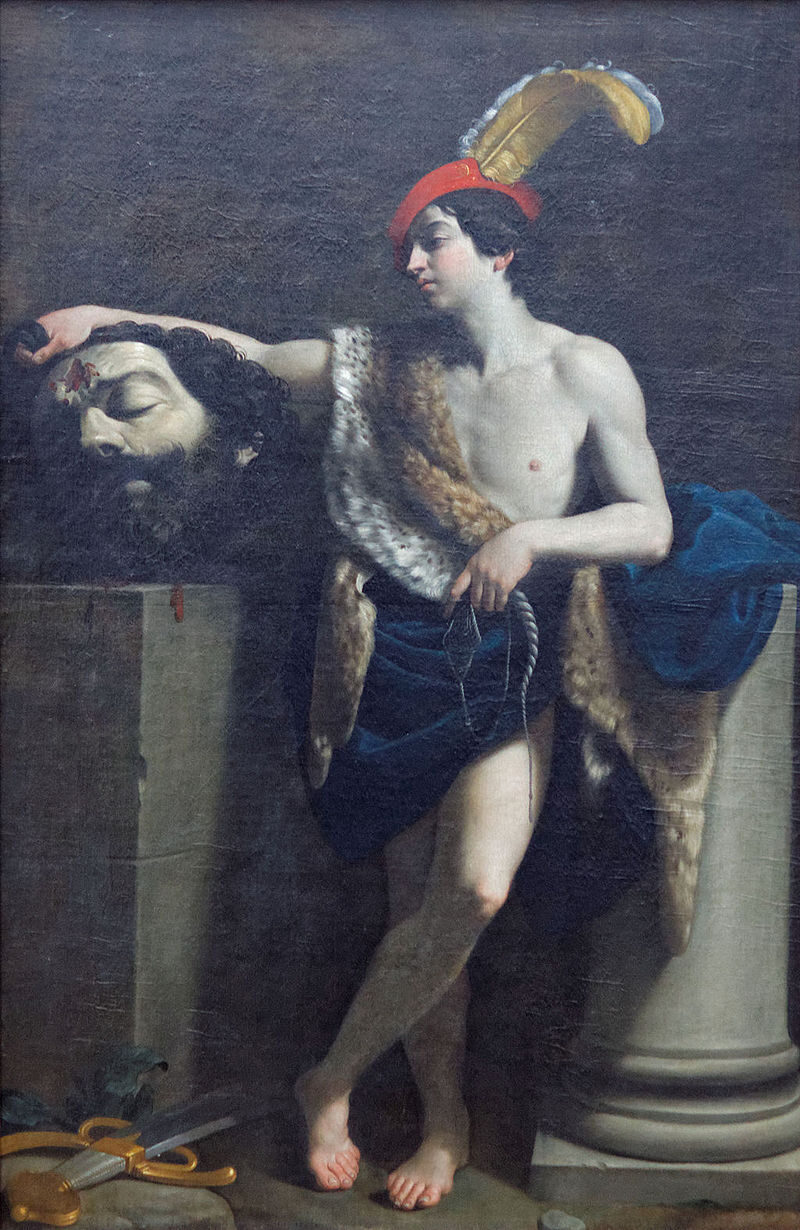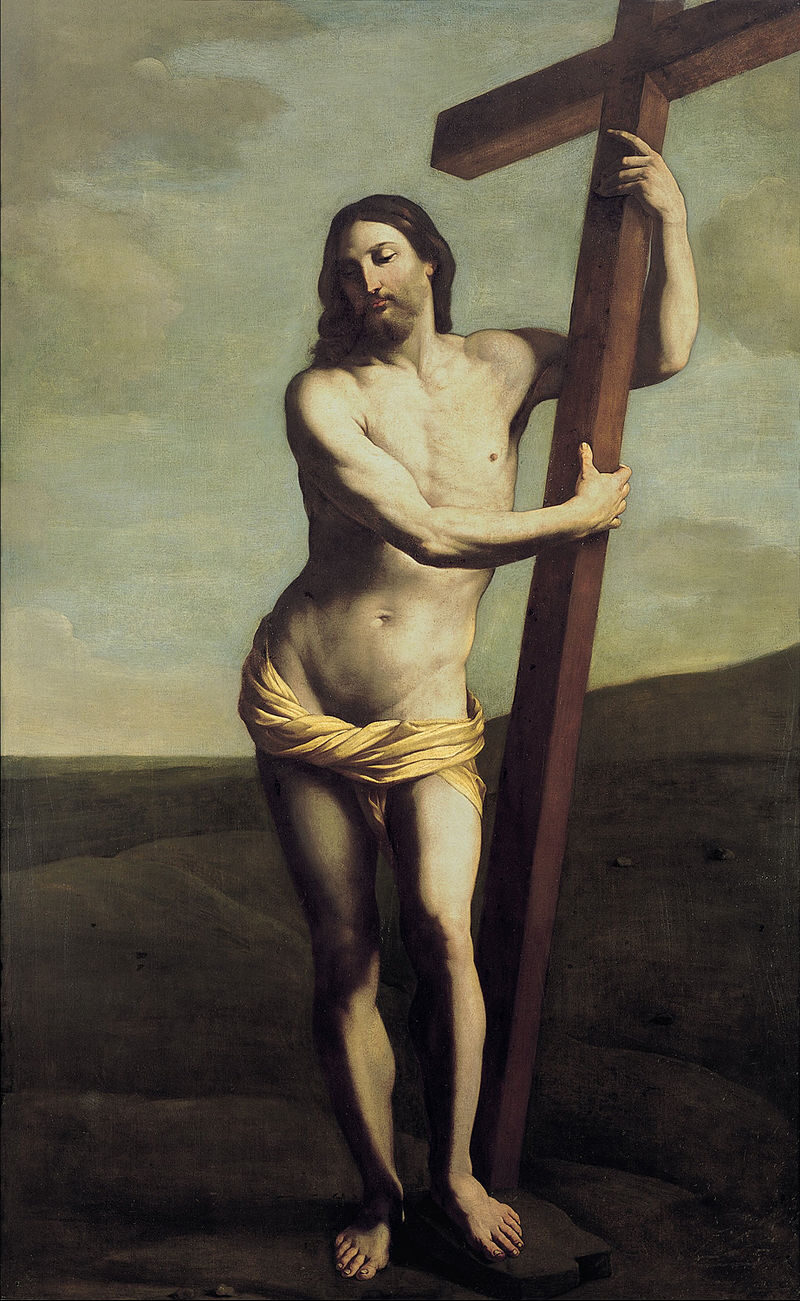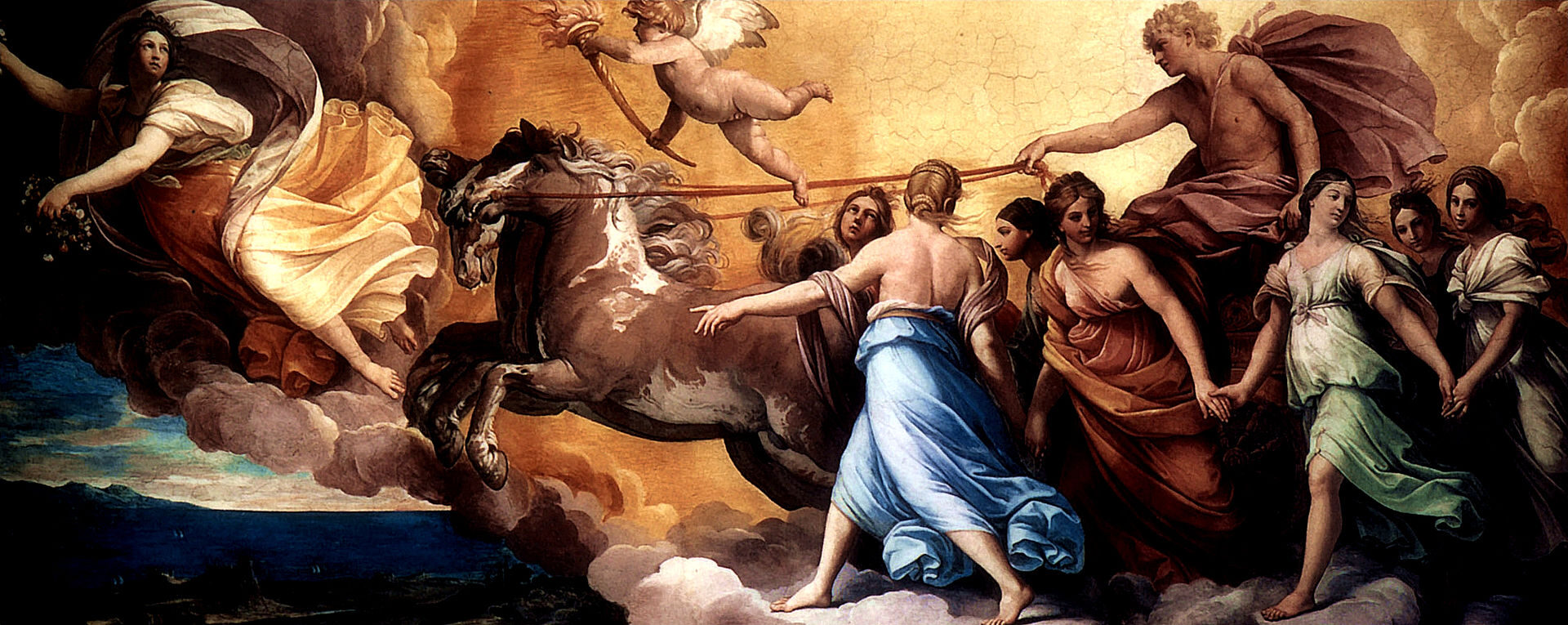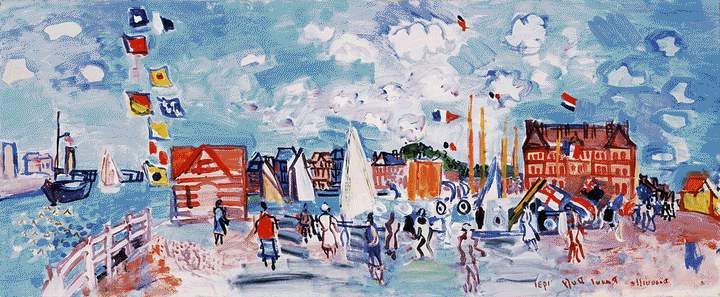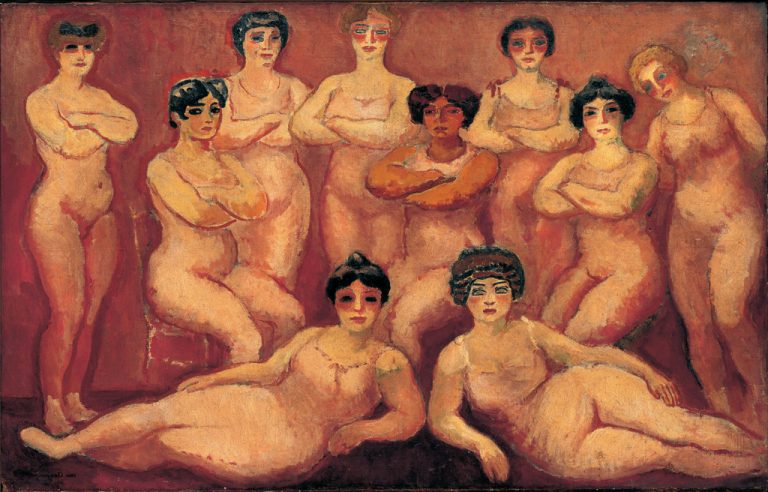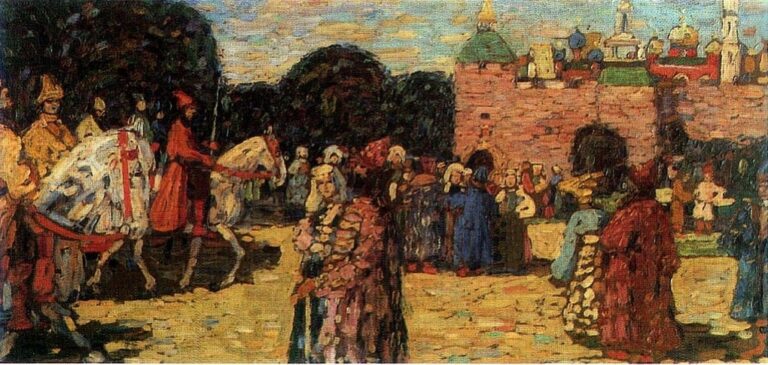Guido Reni Painter: The Baroque Master Who Defined Italian Classicism
Born: 4 November 1575, Bologna, Papal States
Death: 18 August 1642, Bologna
Mouvement artistique : Baroque
Nationalité : Italien
Teacher: Denis Calvaert
Guido Reni Painter: The Baroque Master Who Defined Italian Classicism
Life and Career of Guido Reni
Guido Reni emerged as one of the most significant Italian Baroque painters of the 17th century. His artistic journey spanned decades, producing works that combined classical idealism with religious devotion.
Vie et formation
Guido Reni was born in 1575 in Bologna, Italy, to Danieli Reni, a musician. Unlike expectations to follow his father’s musical career, young Guido showed remarkable artistic talent early on.
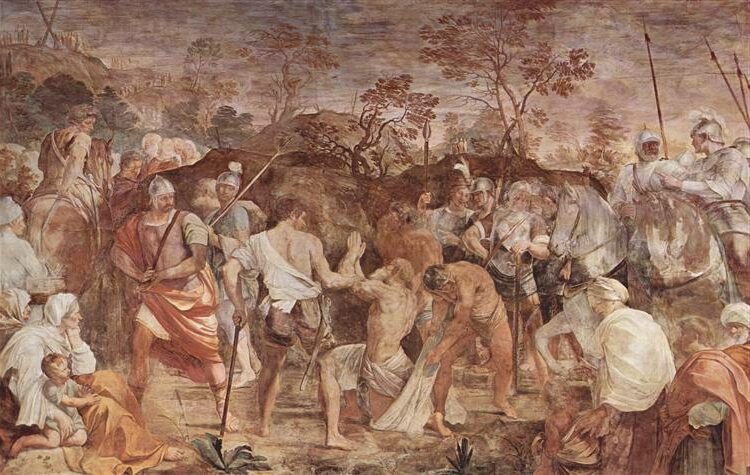
Martyrdom of St. Andrew (Introduction to the Crucifixion) (c. 1608)
At just nine years old, he began apprenticing in the workshop of Denys Calvaert, a Flemish painter.
After a decade with Calvaert, Reni moved to the influential Carracci Academy (Accademia degli Incamminati). This progressive art school, founded by the Carracci brothers, emphasized drawing from life and studying nature directly.
In this formative period, Reni developed his distinctive style characterized by graceful compositions and delicate coloring. His early works revealed both technical proficiency and an emerging personal aesthetic that would later define his mature style.
Professional Development
By 1601, Reni had relocated to Rome, where he found powerful patrons, including Cardinal Sfondrato and later Pope Paul V. This period marked his rise to prominence in elite artistic circles.
During this time, he created significant works for churches and private collections.
Reni’s Roman period exposed him to classical antiquity and the works of Raphael, influences that reinforced his inclination toward idealized beauty and harmonious compositions. His painting style became distinctively elegant, earning him commissions from prestigious clients.
In 1614, Reni returned to Bologna, establishing a busy workshop. He became renowned for his emotional religious paintings and mythological scenes. His workshop produced numerous works that spread his artistic vision throughout Europe, making him one of the most celebrated painters of his time.
Les dernières années et la mort
In his final decades, Reni adopted a lighter palette with silvery tones, creating ethereal works of remarkable spiritual intensity. Though highly successful, he struggled with a gambling addiction that complicated his finances despite significant earnings.
His later style showed greater simplicity and spirituality. The figures in his paintings became increasingly idealized, focusing on divine beauty rather than earthly realism. This approach resonated with Counter-Reformation ideals of religious art.
Reni remained productive until his final years. He died in Bologna on August 18, 1642, leaving behind an influential artistic legacy. His work bridged High Renaissance ideals with Baroque emotionality, creating a distinctive approach that influenced generations of artists. His paintings continue to be admired for their technical excellence and spiritual power.
Influences et style artistique
Guido Reni’s artistic development was shaped by several key influences that helped form his distinctive approach to painting. His work evolved from early Baroque influences to a more refined classical style that became his signature.
Caravaggio’s Impact
When Reni moved to Rome in the early 1600s, Caravaggio’s dramatic style was revolutionizing Italian art. Though their approaches differed greatly, Caravaggio’s use of light and shadow made a significant impression on Reni’s early work.

Angels (1627) by Guido Reni
This influence appears in Reni’s dramatic contrasts and occasional use of tenebrism (strong light-dark contrasts). Unlike Caravaggio’s often violent or gritty subjects, Reni adapted these techniques to create more idealized, spiritual scenes.
Several of Reni’s Roman-period works show this Caravaggesque influence, particularly in his treatment of light and composition. However, he never fully embraced Caravaggio’s naturalism, instead merging these elements with classical ideals.
Developing a Unique Style
By the 1620s, Reni had established his distinctive artistic voice. He developed a bright palette and refined brushwork that set him apart from contemporaries.
His figures became increasingly idealized, with smooth, porcelain-like skin and elegant poses. Reni gained particular renown for his masterful depiction of draped clothing, creating flowing fabrics with remarkable subtlety and grace.
Reni’s work showed strong classical influences, placing him alongside artists like Nicolas Poussin who favored classical restraint over Baroque drama. His paintings featured:
- Balanced, harmonious compositions
- Subtle color harmonies with silvery highlights
- Idealized yet expressive faces
- Graceful, elegant poses
This refined approach earned him fame throughout Europe, with collectors eagerly seeking his works.
Reni’s Etchings
Beyond painting, Reni produced remarkable etchings that showcased his technical versatility. These works revealed another dimension of his artistic sensibility.
His etchings displayed the same elegant line quality found in his paintings but with a more intimate, direct expression. Working in this medium allowed Reni to experiment with composition and light effects in ways different from his painted works.
Many of Reni’s etchings featured religious themes, particularly scenes from the life of Christ and images of the Madonna. These prints circulated more widely than his paintings, extending his influence across Europe.
Reni’s etching technique employed delicate, controlled lines that created subtle tonal variations. This approach demonstrated his exceptional draftsmanship and attention to detail in all artistic mediums.
Œuvres notables
Guido Reni created numerous masterpieces throughout his career, showcasing his talent for both religious and mythological subjects. Elegant compositions, idealized figures, and a masterful use of light characterize his works.
David with the Head of Goliath
Reni’s “David with the Head of Goliath” (c. 1605) depicts the biblical hero moments after his victory over the Philistine giant. The painting shows David as a youthful, handsome figure looking contemplatively at Goliath’s severed head.
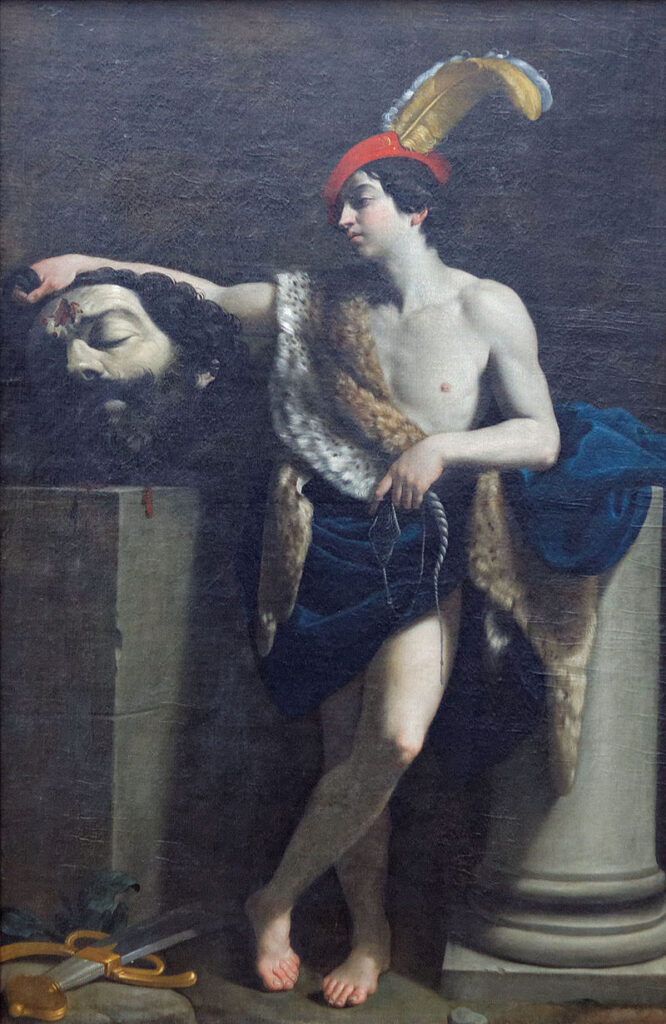

Unlike more dramatic interpretations by artists like Caravaggio, Reni’s version emphasizes David’s calm dignity rather than the violence of the act. The composition features Reni’s characteristic soft lighting and idealized facial features.
The work demonstrates Reni’s ability to blend classical beauty with religious narrative. David’s pose suggests both triumph and thoughtfulness, creating a psychological dimension to the biblical story.
Atalanta and Hippomenes
This mythological scene, painted around 1620-1625, portrays the race between Atalanta and Hippomenes from Greek mythology. Reni captures the moment when Hippomenes distracts Atalanta with golden apples to win the race and her hand in marriage.
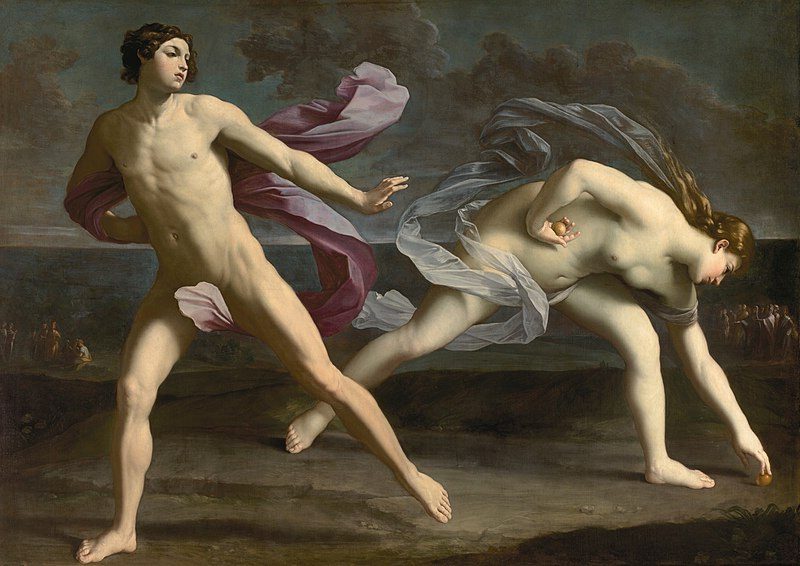
Hippomenes and Atalanta (1618–1619) by Guido Reni
The painting showcases Reni’s mastery of depicting movement and human anatomy. Both figures are shown in dynamic poses, their bodies elongated in the classical tradition but with a distinctly Baroque sense of motion.
Reni’s treatment of the subject emphasizes the beauty of the human form while conveying the narrative’s dramatic tension. The landscape setting provides depth to the composition while keeping the focus on the two central figures.
Joseph and Potiphar’s Wife
Completed around 1630, this biblical scene depicts the moment when Joseph flees from the advances of Potiphar’s wife. The painting demonstrates Reni’s skill at capturing dramatic emotional tension between figures.

Joseph and Potiphar’s Wife (c. 1630) by Guido Reni
Joseph is portrayed in a defensive posture, pulling away while maintaining his moral integrity. Potiphar’s wife, in contrast, reaches for him with desire. The composition creates a diagonal tension that enhances the narrative drama.
Reni’s use of color is particularly noteworthy in this work, with rich fabrics and drapery emphasizing the luxury of the Egyptian setting. The painting exemplifies Reni’s ability to treat potentially sensual subjects with moral clarity and emotional depth.
Lucretia
Reni painted several versions of Lucretia, the Roman noblewoman whose suicide after being raped led to the overthrow of the monarchy. His most famous version (c. 1625) shows Lucretia at the moment before her suicide.


The artist portrays Lucretia with dignified determination rather than overwrought emotion. Her face reflects both beauty and resolve, embodying the virtue that made her a symbol of honor in Roman history.
The composition focuses tightly on the figure, often showing her with the dagger poised. Reni’s treatment transforms the violent subject into a meditation on virtue and sacrifice. His technical mastery is evident in the rendering of skin tones and fabric textures.
Ecce Homo
This powerful religious image, housed in the Städel Museum, depicts Christ crowned with thorns. Painted around 1639, it exemplifies Reni’s later style with its emotional intensity and spiritual depth.


Christ’s upward gaze conveys both suffering and transcendence, creating a deeply moving devotional image. The lighting emphasizes Christ’s face against a dark background, focusing the viewer’s attention on his expression.
Reni’s handling of pain in this work is particularly notable – he depicts Christ’s suffering without graphic violence, instead conveying spiritual agony through subtle facial expression. This approach made his religious works particularly effective for private devotion.
Aurora
One of Reni’s most celebrated works, “Aurora” (1613-1614), is a ceiling fresco painted for the Casino of the Palazzo Pallavicini-Rospigliosi in Rome. It depicts the goddess Aurora leading Apollo’s chariot across the sky, surrounded by dancing Hours.

L’Aurora (c. 1612–1614) by Guido Reni
The composition displays remarkable spatial organization, with figures appearing to float above the viewer. Reni’s mastery of foreshortening creates a convincing illusion of figures in flight.
The fresco’s bright palette and dynamic composition made it one of the most admired works of the Baroque period. It demonstrates Reni’s ability to handle complex mythological narratives with clarity and grace while creating a visually stunning decorative effect.
Questions fréquemment posées
Guido Reni’s artistic legacy raises many questions about his techniques, influences, and masterpieces. These common inquiries help us understand the Italian Baroque painter’s significance and lasting impact on art history.
What are the most acclaimed works of Guido Reni?
Reni’s “Aurora” fresco, painted in 1614 for the Casino dell’Aurora in Rome, stands as one of his most celebrated works. The painting shows Apollo’s chariot preceded by Aurora (Dawn) scattering flowers.
His “Abduction of Deianira” demonstrates his mastery of mythological subjects while “St. Sebastian” reveals his skill in depicting religious martyrdom with both devotion and classical beauty.
“The Assumption of the Virgin” in the Genoa Cathedral showcases Reni’s ability to create uplifting spiritual compositions with remarkable use of light and color.
In which ways did Guido Reni contribute to the Baroque art movement?
Born in 1575 in Bologna, Reni developed a distinctive style that balanced Baroque emotionality with classical restraint. His work offered a more controlled alternative to the dramatic intensity of contemporaries like Caravaggio.
Reni pioneered a luminous, idealized approach that emphasized spiritual beauty and grace. This became known as “ideal Baroque” and influenced religious art throughout Europe.
He brought technical precision and emotional subtlety to the movement, creating works that communicated religious themes with clarity and elegance.
Can you detail the stylistic characteristics of Guido Reni’s artwork?
Reni’s art features smooth, refined brushwork creating porcelain-like surfaces. His paintings often display a silvery, cool color palette that creates an ethereal quality.
His figures exhibit idealized beauty derived from classical sculpture. Reni was known for his ability to capture facial expressions that conveyed complex emotions while maintaining classical serenity.
Light plays a crucial role in his compositions, often bathing subjects in a gentle illumination that highlights their spiritual nature. His later works moved toward even greater simplicity and purity of form.
What notable pieces by Guido Reni are displayed at the National Gallery?
The National Gallery in London houses “The Rape of Europa,” which demonstrates Reni’s graceful approach to mythological subjects with its delicate colors and fluid composition.
“Saint Mary Magdalene” reveals Reni’s skill in depicting religious figures with both emotional depth and idealized beauty. The painting shows the saint in contemplative prayer.
His “Lot and His Daughters” displays Reni’s ability to handle complex biblical narratives while maintaining technical excellence in form and color harmony.
How did Guido Reni’s portrayal of religious figures like St. Sebastian and Michael revolutionize art?
Reni’s St. Sebastian departed from earlier depictions by emphasizing spiritual transcendence over physical suffering. His martyrs appear almost ecstatic, lifting their eyes heavenward while maintaining classical physical beauty.
His Archangel Michael presents divine power through grace rather than force. The archangel defeats Satan with seeming effortlessness, creating a new visual language for spiritual triumph.
These portrayals merged religious devotion with classical aesthetics, influencing how sacred subjects would be depicted for generations.
What influence did Guido Reni have on his contemporaries and subsequent generations of artists?
As a graduate of the Carracci workshop and later a master himself, Reni trained numerous artists who spread his aesthetic principles throughout Europe.
His studio became an important artistic center in Bologna.
His refined style strongly influenced 18th-century Neoclassicism.
Artists like Anton Raphael Mengs directly referenced Reni’s approach to idealized beauty and clarity of form.
Even after the Baroque fell from favor, Reni’s work maintained its reputation.
His balance of emotion and restraint appealed to changing tastes, allowing his influence to persist where more dramatic Baroque styles faded.

